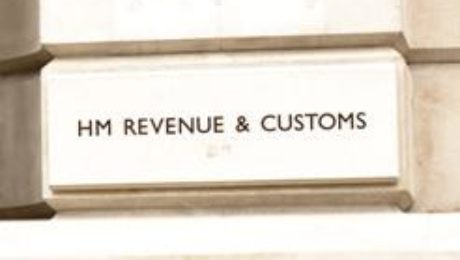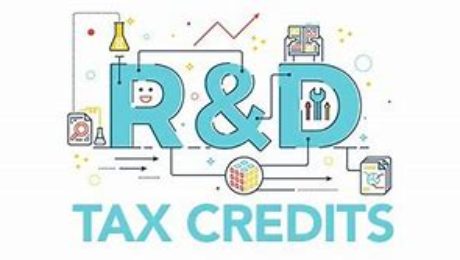More than 33,600 tax credits claimants use HMRC app to renew
A record 33,600 tax credit claimants have used the HMRC app to renew their tax credits claim so far this year, a 39% increase on last year, HMRC has revealed
The deadline to renew tax credits is 31 July and all claimants must renew their tax credits entitlement every year.
HMRC is encouraging more people to use the app as it is a quick and easy way to get this vital job done.
It is free and simple to use and allows direct access to tax credits at the touch of a button. There are many benefits of the fully secure app, which can be used on any smartphone or tablet, at any time, eliminating the need to call HMRC and saving time and money.
The HMRC app can be used to:
- renew their tax credits;
- make changes to their claim;
- check their tax credits payments schedule; and
- find out how much they have earned for the year.
There are nearly 259,000 tax credits app users, who have used the app more than 10 million times in the last year to do things like check their payment dates and amount.
Myrtle Lloyd, HMRC’s director general for customer services, said: ‘Time is running out for our tax credits customers to renew their claims. It’s quick, easy and free to complete a renewal on the HMRC app – search ‘HMRC’ in your smartphone app store.’
The app can be downloaded at the App Store or Google Play. Online reviews at both indicate plenty of satisfaction with the app’s performance, as it currently holds a score of 4.5 stars on the App Store, and 4.7 on Google Play.
HMRC has released a video to explain how tax credits claimants can use the HMRC app to view, manage and update their details.
Once signed into the app after initial download, there are options for users to set up and select facial recognition, a fingerprint or a six-digit pin to get fast and fully secure access to their details.
The government has recently announced a cost of living payment of £650, payable in two separate lump sums of £326 and £324, for households receiving certain benefits or tax credits, to help with the cost of living. If receiving tax credits only, they are eligible for each payment.
HMRC will contact them and issue payments automatically, with the first being made by the autumn. It is not necessary to contact HMRC or apply for the payment.
Tax credits are ending and will be replaced by Universal Credit by the end of 2024. Many people who move from tax credits to Universal Credit could be financially better off and can use an independent benefits calculator to check, HMRC said. If people choose to apply sooner, it is important to get independent advice beforehand as they will not be able to go back to tax credits or any other benefits that Universal Credit replaces.
HMRC is warning people about scammers, saying that if someone contacts them saying that they are from HMRC and wants the customer to transfer money urgently or give personal information, they should never let themselves be rushed.
HMRC is also urging people never to share their HMRC login details. Someone using them could steal from the individual or make a fraudulent claim in their name. The department urges people to take their time and check HMRC’s advice about scams on gov.uk.
To sign into the HMRC tax credits service for the first time, people will need to prove their identity using two evidence sources. GB driving licences can now be used as a form of identity.
- Published in Tax Credits
Research & Development Tax Credits.
Research and Development (R&D) reliefs support companies that work on innovative projects in science and technology. It can be claimed by a range of companies that seek to research or develop an advance in their field. It can even be claimed on unsuccessful projects.
You may be able to claim Corporation Tax relief if your project meets our definition of R&D.
Tax Credits Explained
In order to encourage Research and Development the UK Government introduced R&D Tax Credits in 2000.
This has proved highly popular with 86,000 UK companies claiming back almost £7.4bn in tax relief in 2020. R&D Tax Credits are a very niche part of the UK tax code that could bring your company thousands of pounds in tax relief.
- A government incentive aimed at advancing science and technology within UK companies
- Launched in the year 2000
- Rewards innovation, risk taking, and research and development
- You can backdate your claim up to two financial years.
Who is eligible?
Companies of all sizes can claim R&D Tax Credits.
The size of your business will determine which R&D Tax Credits scheme you are eligible for and ultimately what proportion of your spend you can claim back, but every business registered in the UK is eligible.
Eligible R&D activities:
- Overcoming technical challenges
- Creating and testing prototypes
- Streamlining processes
- Trialling new or substituting materials
- Developing bespoke software
- Trial and error
- Industry firsts

What can be claimed back?
R&D Tax Credits are calculated based on enhancing expenditure for research and development work, as the UK Government aims to reward innovation for SMEs and large companies.
- Staff wages and other related costs
- Payments made to sub-contractors and external workers
- The cost of materials consumed
- Software licensing costs
- Payments to clinical volunteers
- Light, heat, power and other utility costs.
https://www.gov.uk/guidance/corporation-tax-research-and-development-rd-relief
- Published in Research & Development


